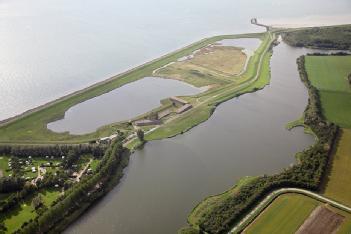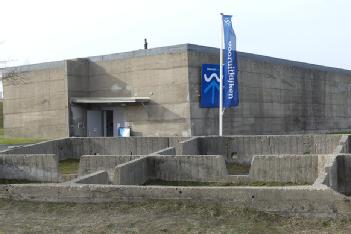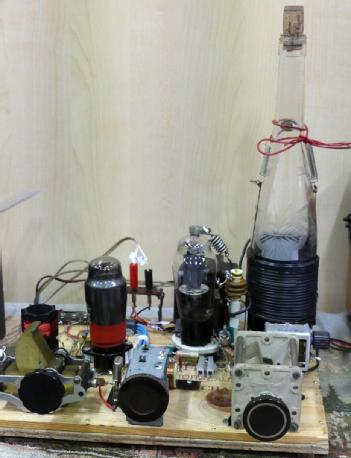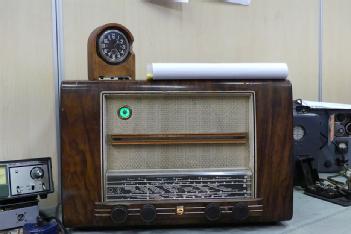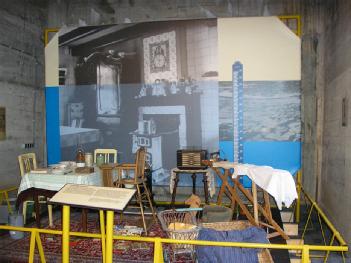
 |
Watersnoodmuseum |
4305 RJ Ouwerkerk, Netherlands (Zeeuws-Vlaanderen - Zeeland) |
|
| Address |
Weg van de Buitenlandse Pers 5
|
| Floor area | unfortunately not known yet |
Heritage- or City Museum
- Trucks / Lorries
- Technical and functional models
- Radios (Broadcast receivers)
- Mine- & Parc Railways
- Amateur Radio / Military & Industry Radio
- Building (Construction) machinery
|
Opening times
|
April - October: daily: 10 am - 5 pm November - March: Tuesday - Sunday: 10 am - 5 pm April tot Oktobe dagelijks: 10:00 - 17:00
November - maart: dinsdag - zondag: 10:00 - 17:00 |
||||
|
Status from 08/2021
|
Adults: € 12,00; Children 5 – 12 years old: € 6,50 Volwassenen: € 12,00; Kinderen 5 - 12 jaar: € 6,50 |
||||
| Contact |
|
||||
| Homepage | watersnoodmuseum.nl | ||||
| Location / Directions |
Ouwerkerk is a village in the southwest Netherlands. It is located in the municipality of Schouwen-Duiveland, Zeeland about 60 km south of Rotterdam. Ouwerkerk is the oldest village of the former island of Duiveland, possibly founded in the eleventh century. During the North Sea flood of 1953 Ouwerkerk was hit hard: one in six residents died. Many buildings, including a wooden octagonal flour mill, were lost. The breach of the dike at Ouwerkerk was the last one to be closed in the night of 6 to 7 November 1953. |
| Description | Expositions The flood museum is located in the four caissons that were used in 1953 to close the final opening in the dike. Walking into the museum is like walking into the history of water from 1953 up until now. Discover what the museum can teach you about water and water safety. The dikes break (Caisson 1) It is the night of Saturday 31 January and Sunday 1 February 1953. A severe north-westerly storm pushes the waters of the North Sea up high into the English Channel. Even before springtide has reached its highest point, the dikes break in the southwest of The Netherlands. In caisson 1, the story of the Flood is told. This is done through historical polygon images and a number of seemingly ordinary objects. Together, these paint the picture of the disaster that occurred that night. The collection of photo albums and folders with newspaper clippings about the Flood is also worthwhile to browse through. Despair and decisiveness (Caisson 2) During the night of the disaster, people desperately try to seek help via the phone, but the lines are down. Amateur radio operators do succeed with a homemade transmitter. Rescue operations are started. In caisson 2 you will find stories about despair and decisiveness. The despair of those who were hit by the Flood and the decisiveness of the helpers: from Urk fishermen and the Red Cross to the military. Repairing and strengthening the dikes (Caisson 3) Day and night, people work with all their might to repair the dikes and houses and reorganize the destroyed landscape. In caisson 3, machines can be seen that were used in repairing the dikes. To make sure that a disaster like the one in February 1953 will never happen again, the Deltaplan is drawn up: one of the most revolutionary hydraulic engineering projects in the world. In the final section of caisson 3 the modern ways of water management in The Netherlands are shown. The battle is never ending (Caisson 4) In The Netherlands, we are never done with water management. The choices that are made right now in the Delta area will affect the (distant) future. That makes water management both intriguing and exciting. Water awareness is what matters in caisson 4. In the large ‘sandbox’, visitors can change water currents in a virtual landscape themselves through the use of augmented reality techniques and discover how it influences the landscape. Primal force |
| Description (other) |
Vaste tenstoonstelling Het Watersnoodmuseum is gevestigd in de vier caissons die gebruikt zijn voor de sluiting van het laatste stroomgat; het gat in de dijk waar ruim negen maanden eb en vloed door stroomde als gevolg van de watersnood van 1 februari 1953. Als je het museum binnenloopt, stap je de geschiedenis binnen. Ontdek wat het museum jou, over de watersnood van toen en het belang van waterveiligheid anno nu, vertelt. De dijken breken (Caisson 1) Het is de nacht van zaterdag 31 januari op zondag 1 februari 1953. Een zware noordwesterstorm stuwt het Noordzeewater hoog op in het Engelse kanaal. Nog voordat de (spring)vloed op z’n hoogst is breken de dijken in zuidwest-Nederland. In caisson 1 wordt het verhaal van de watersnoodramp verteld. Dat wordt gedaan met historische polygoonbeelden en tal van schijnbaar alledaagse gebruiksvoorwerpen die samen een beeld schetsen van de ramp die zich die nacht voltrokken heeft. Ook de moeite waard is de collectie fotoboeken en knipselmappen over de watersnoodramp. Wanhoop en daadkracht (Caisson 2) Tijdens de rampnacht proberen PTT’ers wanhopig hulp te zoeken via de telefoon. Zij worden niet gehoord. Radio-amateurs lukt het wel met een zelfgebouwde zender. Reddingswerk en hulpverlening komen op gang. Dijkherstel en dijkversterking (Caisson 3) Met man en macht wordt dag en nacht gewerkt aan het herstel van de dijken en huizen en het herinrichten van het verwoeste landschap. In caisson 3 zijn machines te zien die bij het dijkherstel zijn gebruikt. Om ervoor te zorgen dat een ramp zoals die van februari 1953 nooit meer kan gebeuren wordt het Deltaplan opgesteld: één van de meest revolutionaire waterbouwkundige projecten ter wereld. In het laatste deel van caisson 3 gaat het om nieuwe manieren van waterbeheer in Nederland. De strijd is van altijd (Caisson 4) Waterbewustzijn. Daar draait het om in caisson 4. Water heeft een belangrijke rol in het dagelijks leven en met waterbeheer ben je nooit klaar. De keuzes die nu voor het deltagebied gemaakt worden, werken door in de (verre) toekomst. Dat maakt waterbeheer intrigerend en spannend. In een grote ‘zandbak’ kunnen bezoekers met behulp van geavanceerde technieken (augmented reality) eigenhandig de waterstromen in een virtueel landschap veranderen en zien wat dat voor invloed heeft op het landschap. Oerkracht |
[dsp_museum_detail.cfm]
| Data Compliance | More Information |
 watersnoodmuseum.nl
watersnoodmuseum.nl 